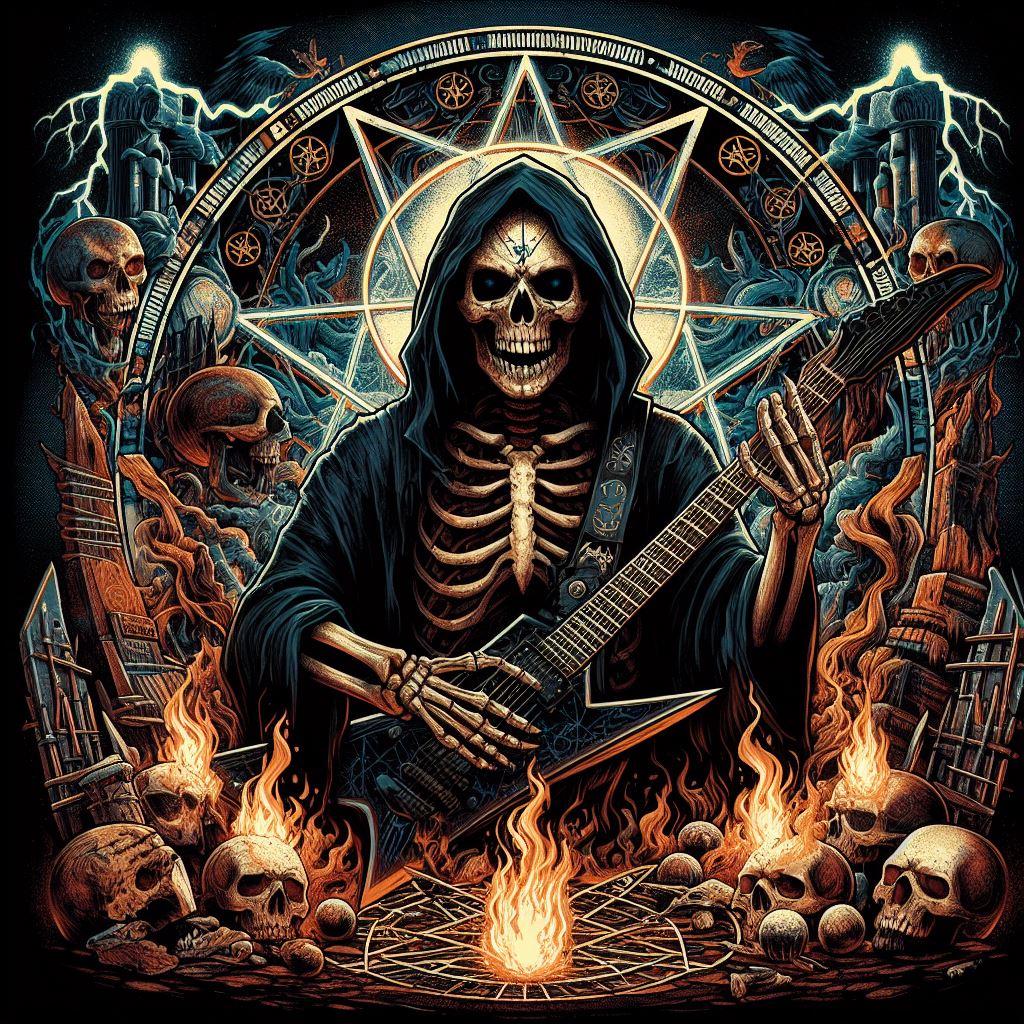Title: Unveiling Darkness: The History of Eternal Evil
In the realm of heavy metal music, there exist bands that transcend mere musical prowess and delve deep into the realms of darkness and mystique. One such band that has captivated audiences with their raw energy and sinister melodies is none other than Eternal Evil. Formed in the early 1990s in the bleak industrial city of Blackwood, Eternal Evil quickly rose to prominence within the underground metal scene, carving a path of destruction and chaos with their intense live performances and dark lyrical themes.
The origins of Eternal Evil can be traced back to a fateful meeting between guitarist and main songwriter, Damien Black, and vocalist Raven Dark. Bonded by their mutual love for all things macabre and malevolent, the duo set out to create a band that would channel their innermost demons and unleash them upon the world. Recruiting like-minded musicians who shared their passion for the occult and the forbidden, Eternal Evil was born.
The band’s early sound was heavily influenced by classic metal acts such as Black Sabbath and Iron Maiden, but with a modern twist that incorporated elements of thrash and black metal. Their debut EP, “Shadows of the Night,” released in 1993, garnered critical acclaim within the underground metal community for its raw intensity and haunting melodies. Songs like “Blackened Soul” and “Eternal Damnation” showcased the band’s ability to create dark, atmospheric music that resonated with fans of extreme metal.
As Eternal Evil began to gain a following, they embarked on a series of tours that solidified their reputation as one of the most intense live acts in the metal scene. Damien Black’s frenetic guitar playing and Raven Dark’s haunting vocals combined to create a sonic assault that left audiences in awe and terror. The band’s stage presence, shrouded in darkness and adorned with occult symbols, only added to the mystique that surrounded them.
In 1996, Eternal Evil released their debut full-length album, “Rites of the Damned,” which further solidified their place in the annals of metal history. Tracks like “Cult of the Unholy” and “Witching Hour” showcased the band’s evolution towards a more blackened and atmospheric sound, drawing comparisons to revered acts like Mercyful Fate and Bathory. The album’s apocalyptic themes and bleak imagery struck a chord with fans of extreme metal, propelling Eternal Evil to new heights of notoriety.
Throughout the late 1990s and early 2000s, Eternal Evil continued to release a string of critically acclaimed albums, each one delving deeper into the darkness that fueled their music. The band’s uncompromising dedication to their craft and refusal to conform to trends endeared them to a loyal fan base that embraced their unique blend of aggression and melody.
Today, Eternal Evil stands as a beacon of darkness in a world consumed by light. Their music serves as a reminder of the primal forces that lurk within us all, waiting to be unleashed. With a discography that spans decades and a legacy that will endure for eternity, Eternal Evil remains a testament to the power of metal music to transcend boundaries and touch the very depths of the human soul.
In conclusion, the history of Eternal Evil is a tale of darkness, passion, and unrelenting dedication to the craft of metal music. With their haunting melodies and infernal energy, the band has carved a place for themselves in the pantheon of metal legends, inspiring generations of fans to embrace their innermost demons and unleash them upon the world. Eternal Evil’s legacy will continue to echo through the ages, a testament to the enduring power of metal to capture the essence of darkness and transform it into something truly majestic.
